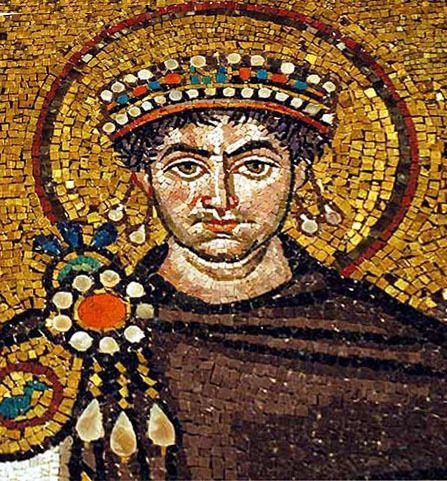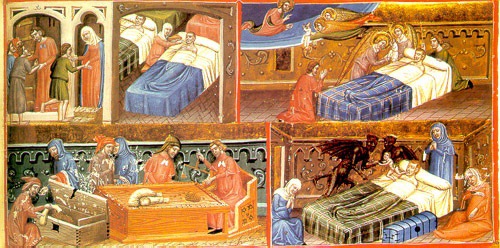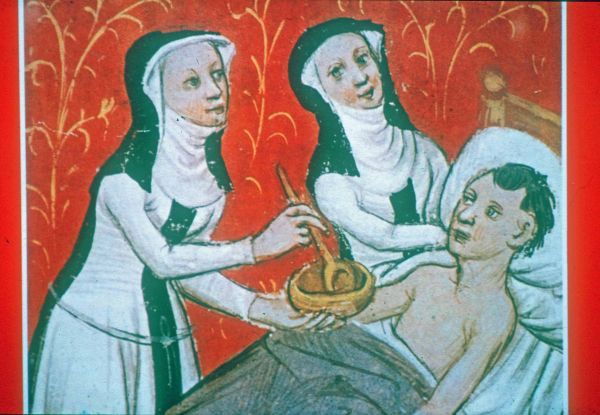BYZANTINE MEDICINE
If you were going to get sick in the Dark Ages, best to do it in Constantinople. It remained a beacon of light and learning in a world increasingly darkened by ignorance and superstition. Byzantine medicine was full of discovery, as well as preserving medical practices from the golden age of ancient culture, all of which influenced Islamic medicine. When the Western world began to wake up in the Renaissance, the information was there, waiting to make the world well.
By Medieval times, medical treatment in Europe was largely a matter of prayer, with angels or demons responding to carry off the patient. But 6th-century Constantinople was still lit by the glow of ancient Greek and Roman enlightenment. Byzantine society was educated. Primary school was easily available for both boys and girls, even in the villages. Women played a large part in Byzantine culture. The Augusta Pulcheria, sister to Emperor Theodosius II, had established women on a par with the Holy Virgin Mary and set them on a course of, if not equality, respect.
The legend of Justinian’s healing by St Sampson, resulting in our Hospital, is likely true. Justinian subsidized private physicians to work publicly six months of the year, a breakthrough in medicine. Our Hospital would have had a Chief Physician: Archiatroi, professional nurses: Hypourgoi, and orderlies: Hyperetai.



Very enjoyable and emotive of the moody surroundings. Lovely artwork and writing! You did it all! I am a friend of Leslie Foale and she has told me about you. We are both on the Isle of Skye. Best Wishes to you and thank you for such a meaningful and moving post.